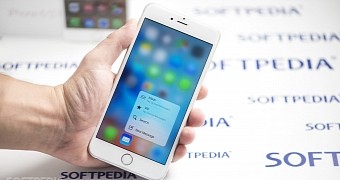Rumor has it that Apple is planning to switch from LCD to OLED screens for the iPhone sometime in 2018, and a new report now reveals that the company is secretly working on the new display technology on its own in a Taiwanese lab.
Citing sources with knowledge of the matter, Bloomberg writes that the new lab is located in northern Taiwan and employs researchers that previously worked for display manufacturers, including Qualcomm and AU Optronics.
Details are missing for the moment, but it’s believed that approximately 50 employees are working on what could be the next generation of displays for iPhone and iPad models.
The aforementioned source writes that Apple’s primary goal is to create a display that is thinner, lighter, and brighter than the current screens on the market and that are available from various OEMs. Apple is also researching new ways to make displays more energy-efficient, and one possible way to achieve this goal is by turning to organizing LEDs.
OLED-based iPhones starting 2018
Previous reports on Apple’s future iPhone generations indicated that the company was planning to switch from LCD to OLED screens for iPhone 8, which is expected to arrive in 2018.
If this is the case, Apple might be trying to develop its very own OLED technology that would be thinner and more energy-efficient than the current versions found on the market, in an attempt to give the new iPhone a big advantage in the fight against other high-end devices.
And yet, even if Apple makes its very own OLED technology, it’s very unlikely to take care of production, so the company will probably work with either its existing partners or new ones to be in charge of the manufacturing process in their own plants.
The next-generation iPhone, which is likely to be called iPhone 7, will arrive sometime next year, most likely in the summer, as Apple wants to move the typical fall unveiling to an earlier date, and will come with LCD screens, just like the current model.

 14 DAY TRIAL //
14 DAY TRIAL //